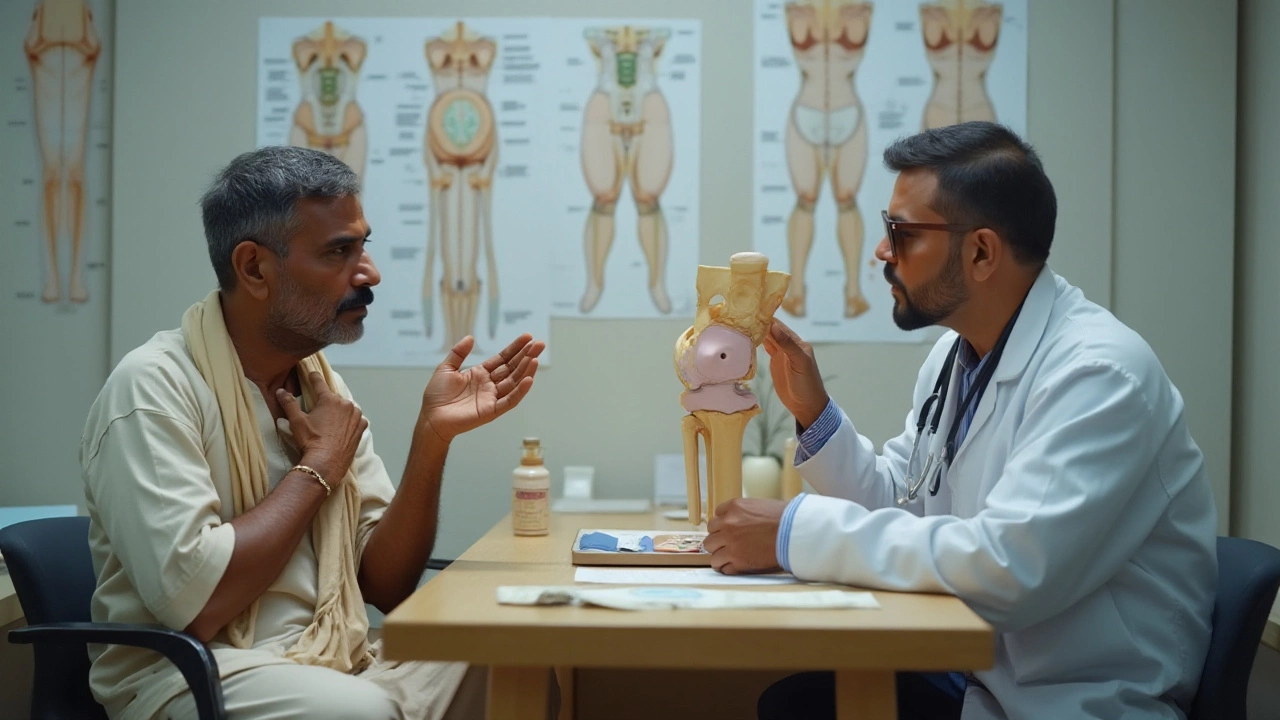Wondering if you can hit the road just two weeks after knee surgery? The answer hinges on a few key factors like your type of surgery, your recovery progress, and your doctor's advice. While some might feel ready, it's crucial to consider both physical healing and legal restrictions. Ensuring a safe return to driving is essential for your well-being and road safety. Let's explore what's involved in getting back behind the wheel after knee surgery.
Read MoreKnee Surgery: What You Need to Know
If you or a loved one is facing knee surgery, the first thing you probably want is a clear picture of what will happen. In simple terms, knee surgery fixes damaged joint parts so you can move without pain. Whether it’s a partial meniscus repair, a total knee replacement, or an arthroscopy, the steps are similar: preparation, the operation, and recovery.
Before the day of surgery, your surgeon will run a few checks – blood tests, X‑rays, and sometimes an MRI. These help decide the exact procedure and any special equipment you might need. Use this time to ask about anesthesia options. Most knee surgeries use either a spinal block or general anesthesia, and both keep you comfortable while the surgeon works.
What Happens After the Knife?
When you wake up, expect a bandage around your knee and a drip of pain medicine. The first 24‑48 hours are usually the toughest. Pain can feel sharp or achy, and many people wonder, “Is this normal?” Yes – it’s part of the body’s healing response. Your team will give you pain‑relief meds, often a mix of opioids for the first day and NSAIDs after that. Take them exactly as prescribed; skipping doses can make the pain spike later.
Movement starts early. Physical therapists will help you sit up, stand, and even take a short walk within the first day. This isn’t a typo – moving soon reduces swelling and speeds up healing. If you’re nervous about walking, use a walker or crutches until you feel steadier.
Recovery Timeline – From Days to Months
Days 1‑3: Pain is strongest, but you’ll start gentle bends and leg lifts. Ice the knee for 20 minutes, three times a day, to cut swelling.
Week 1: You’ll likely be discharged home. Continue with pain meds, keep the incision clean, and do the therapist‑prescribed exercises several times a day.
Weeks 2‑4: Swelling drops, and you can increase walking distance. Most people can drive after the second week if they’re not on strong pain meds.
Months 2‑3: Strength builds. You’ll add resistance bands, stationary bike, or swimming to your routine. Many return to low‑impact activities like walking or light gardening.
Months 4‑6: If everything goes well, you can start moderate activities like jogging or cycling, but always check with your surgeon first.
Every body heals at a different pace, so use these milestones as a guide, not a rule.
Now, what should you watch for? Call your doctor if you notice:
- Fever over 100.4 °F (38 °C)
- Increasing redness, warmth, or pus around the incision
- Severe pain that doesn’t improve with medication
- Sudden swelling or a feeling that the knee is “locked”
These signs can mean infection or a complication that needs attention.
Finally, a few extra tips to boost recovery:
- Stay hydrated – fluids help flush out medicine and reduce swelling.
- Eat protein‑rich foods (eggs, lentils, chicken) to support tissue repair.
- Avoid smoking; it slows bone healing.
- Stick to the rehab schedule – missing sessions can set you back weeks.
Knee surgery can feel intimidating, but with clear expectations, proper pain control, and a steady rehab plan, most people walk out pain‑free and back to daily activities. Keep the lines of communication open with your surgeon and therapist, and you’ll navigate the journey much smoother.
Dealing with stiffness after knee replacement surgery? You're not alone. Many face this issue, but the good news is that there are ways to manage and reduce stiffness effectively. The article explores practical strategies and facts that help improve knee flexibility post-surgery, providing a smoother recovery journey.
Read MoreKnee replacement surgery is a common procedure for alleviating chronic knee pain, but it isn't suitable for everyone. The surgery involves replacing damaged knee joints with artificial components, offering relief for many. However, certain individuals may face risks or complications that make them unsuitable for this procedure. This article explores who may not be an ideal candidate for knee replacement surgery, providing insights to help in making informed healthcare decisions.
Read More






